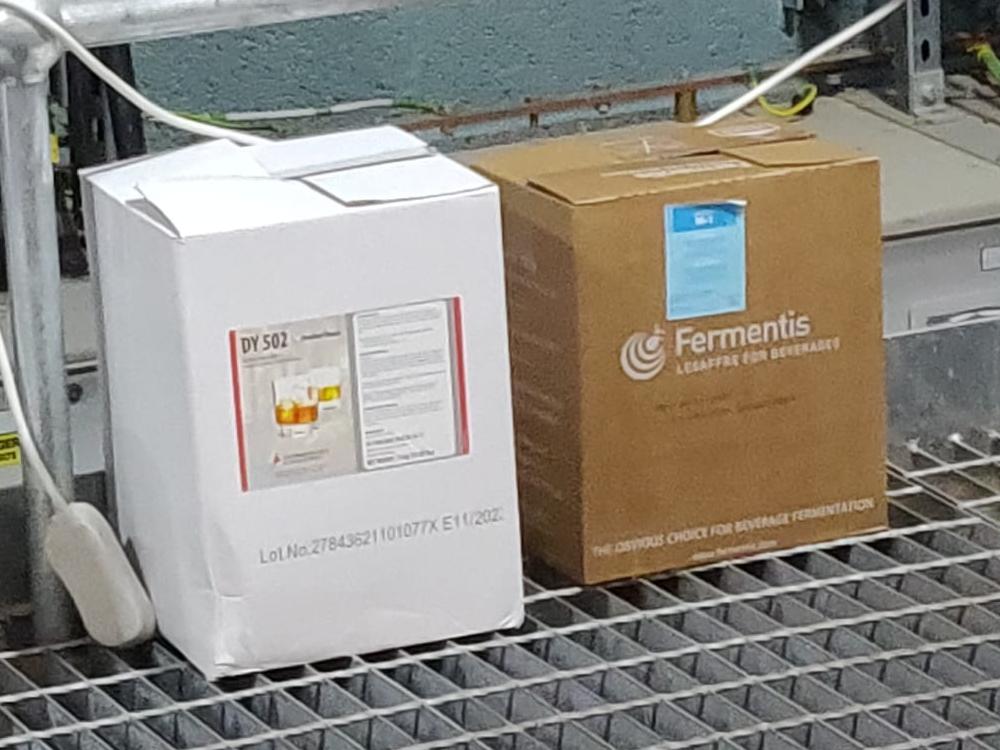Sour Mash
Published August 25, 2021
Contents

Jim Beam, Jack Daniel’s, Wild Turkey, Maker’s Mark and Woodford Reserve are just five of a myriad of Bourbon and Tennessee whiskey distilleries where sour mash is the production method of choice. For the consumer this is a widely recognised but little understood phrase adorning bottles. In truth it’s surprising that the phrase ever made it onto the bottle as the process refers to nothing other than the manipulation of pH to prevent bacterial growth. Sour Mash means that a part of the residue from a previous distillation is added into each mash.
During whiskey making the grains are crushed and cracked open and hot water is added to extract the sugars in a process known as mashing. After adding water, the mash is chemically neutral having a pH (pondus hydrogenii) value of around 7. Unfortunately a high pH is an ideal breeding ground for bacteria and a potential disaster for whiskey production. Although there would be no health risk from this bacterial growth after distillation the metabolic excretions would have a noticeable and unpleasant side effect on the taste of the whiskey, and could potentially kill off the yeast before sufficient alcohol is created.
Many US distillers control pH levels in their new mash by adding an amount of spent mash from the previous round of distillation to the new mash. The addition of part of the very acidic stillage (pH 5.0-5.4) leads to an acidification of the entire mash. After the addition of the stillage, the pH is around 5.4 to 5.8. Sour enough for the yeast to do its job optimally without competition. The previous setback’s dead yeast is also a supply of extra nitrogen, vitamins and other nutrients for yeast metabolisation.
The many names of spent grain
Brewer’s spent grain (BSG) or draff is a food waste byproduct of the beer and whisky making industries. Spent grain makes upto 85% of brewing waste which may help top explain why it goes by so many names:
- stillage
- spent mash
- draff
- brewer’s spent grain
The origin of the Sour Mash process
The first use of sour mash is not certain. The Scottish chemist Dr James Crow is often credited with creating the process however this is uncertain. The process itself may have been very common at the time and something that was explained and standardised by the scientist.
As early as the 17th century Peter Shaw advocated that English distillers acidify or their washes using the juice of lemons, tamarinds or oranges to improve the taste of the resultant spirit. The use of spent wash (called dunder) was commonplace in Jamaica around 1700 for rum production. By the 19th century dunder was prepared, infected with bacteria, wild yeasts and microflora, to create new congeners, amino acids and esters. It is entirely possible that this production process is the origin of the sour mash process.
Benefits of the Sour Mash process
Yeast-backing or the sour mash method as it became known in the Bourbon industry, offers a number of benefits. The most obvious of which is that by reducing the mash’s pH, bacterial growth is inhibited creating a more hospitable environment for yeast propagation. Given the risk of infection and spoilage, particularly at a time when hygiene and cleanliness were not well understood, the sour mash method significantly reduced waste and loss.
Starter Yeast
Fresh yeast supplies were not always readily available. While distillers could harvest yeast spores from orchards and grain many others found sour mash a workable alternative as a yeast-starter. Also known as yeast-backing and back-setting a similar method has been practised for thousands of years for the creation of sourdough bread and beer.
As late as 1912, the US Government recognised three yeasting methods:
- Yeast-back or sour mash
- Commercial yeast replacing sweet mash
- Wild yeast
Alternative methods
The counterpart to the sour mash method is sometimes called sweet mash. The sweet mash method simply means that no spent mash is added to the new mash. Most most Bourbon distillers use the sour mash method, although it is an option not a legal requirement for Bourbon or Tennessee whiskey. However, there are individual bottlings from well-known distilleries, such as the Woodford Reserve 1838, which were made using Sweet Mash and thus offer a taste insight into the science behind whiskey.
FAQs
What is Sour Mash?
Sour mash is the process used by whisky distilleries that relies upon an older batch of mash to begin the fermentation process of the next. This allows control of the pH and also provides valuable nutrients for the yeast. This process is somewhat analogous to the use of sourdough starter rather than fresh yeast.
Who invented the sour mash method?
Scottish chemist Dr James Crow is generally credited as the inventor of the sour mash method. Some sources argue that instead of inventing the process Crow was simply the first distiller to understand the scientific principles behind an already common practice.
How much spent mash is used during the sour mash process?
Sour mash is the process used by whisky distilleries that relies upon an older batch of mash to begin the fermentation process of the next. This allows control of the pH and also provides valuable nutrients for the yeast. This process is somewhat analogous to the use of sourdough starter rather than fresh yeast.
What's the difference between sour mash and sweet mash?
Sour mash uses an older batch of mash to begin the fermentation process of the next, sweet mash relies upon fresh batches of yeast. This process is somewhat comparable to using a sourdough starter over dried yeast when making bread.
Previous

